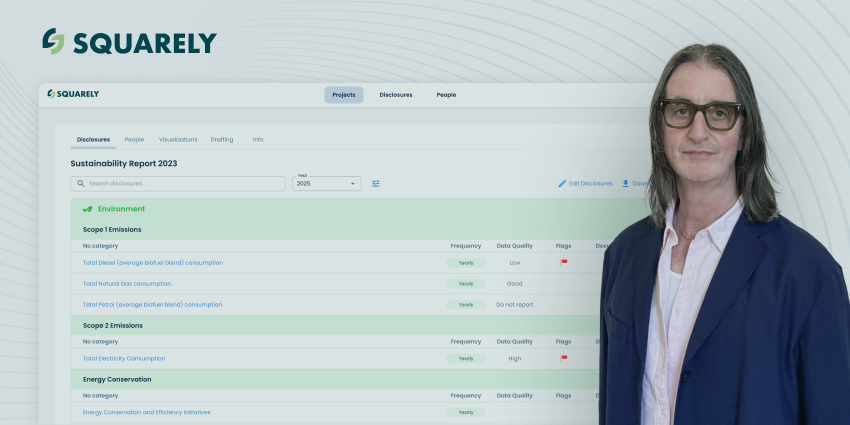Digital Divide - Are we Ready for a Digital Transformation?
Digital divide – Are we Ready for a Digital Transformation
Covid shocked the world. Never before did all the spheres of people’s lives change in such a quick span of time. Our rooms became our offices and classrooms, and our lives became even more dependent on technology. While those privileged shifted to the new norm without much struggle, those with less means were left on the opposite side of a digital divide. Education is the only redistributable resource in a country like India, and yet it became inaccessible for a large percentage of the population overnight. Students could not continue learning as they did not have access to a computer, mobile phone, or internet access.
This blog is an attempt to see how great the extent of digital divide is among the school going children. It also presents a view of how the divide could be different based on caste, class, region, religion etc. The blog also put forth a few ideas by which the government can bridge the gap between the privileged and underprivileged.
Smart Class
On a fine morning in the year 2009, I was surprised to see pieces of equipment that I had only seen once or twice before in my life, being installed in my classroom. They called it a ‘smart classroom’ and we were told that we would be having one ‘smart class’ a week for all the subjects. Until then digital learning had never been heard of. We thought learning was only to be acquired through cheerful or grumpy teachers at school and that video or audio content was solely for entertainment purposes. But there we were, all set to learn from a set of machines.
Fast forward to 2021, smart classrooms are a common sight in private schools while it still is a luxury for the public schools in India. It is widely used to retain and attract students, to get certifications and is a noteworthy status symbol amongst the young learners of the day. Smart classrooms are crucial in student learning outcomes with access to a plethora of resources available online, increasing participative learning and helping the teachers to simplify the pedagogy. The current rate at which the world is turning digital, smart classrooms and advanced infrastructure play a huge role in a learner’s life.
But the question worth asking is: ‘Is the whole world turning digital, or is it a mere facade?’
Digital Divide: A roadblock to India’s Development
In this context, the following are statistics by various organisations which are lamentable, yet not surprising:
- Two-thirds of school going students do not have access to an internet connection at their homes, globally [1].
- Merely 8.5% students in India have access to the internet [2].
- 17.06% being the existing national dropout rate at secondary level, the present condition would deepen the crisis leading to a gloomy future [3].

Image Source : https://datareportal.com/reports/digital-2019-q2-global-digital-statshot
Up until the 1990s, the digital divide was a term used to refer to the differences in being able to access a telephone. Thanks to the advancement in information technology, it is now broadly used to explain the division between the ‘haves’ and ‘have nots’ in computer and internet access. The differences could be anything from ‘unlimited access’, ‘good-enough access’, ‘inadequate access’ to ‘no access’. The effects of the digital divide in India are stark and need urgent attention.
- Only 1/3rd of the indian school children are pursuing online education and an even smaller section of it is attending live classes [4].
- The situation in public schools is even worse, as only 8.1% are attending online classes across the country after the pandemic hit [5].
- When compared with 23% of their urban counterparts, only 4% of the children above 5 years in rural areas have access to computers [6].
Needless to mention the hurdles that even these 4% would be facing, given the unfavourable conditions of electricity, network and other allied infrastructure. It’s obvious that the socio-economic factors play a deciding role in defining the ‘haves’ and ‘have nots’, even in digital terms. However, globally, factors like location, ethnicity and race also influence the equation, quite powerfully. A city dweller despite a low financial status may have access to the internet while a comparatively privileged student from a rural or a challenging demographic region may not have access to it. Similarly, a black or a hispanic student would face greater challenges in accessing modern technology compared to their white fellow learner [7].

Children from Dandwal in Maharashtra, who have missed their online classes due to a lack of internet facilities, sit on the ground in circles drawn with chalk to maintain safe distance as they listen to pre-recorded lessons over loudspeakers – image source : Prashant Waynade, Reuters
Long before The Covid hit us, the Indian government in the year 2015, launched an ambitious ‘Digital India’ (although criticized as a renamed scheme of the UPA government) scheme aiming to revolutionize good governance and empower the country technologically, especially the education sector. In a country with high inequity in access to resources, this was seen as a grand initiative in improving the condition. However, the data presented above proves that the government has to ensure basic infrastructure in place before aggressively trying to revolutionize the education sphere in the country.
Possibilities Ahead
Prominent educationalists, Policymakers and stakeholders within the Education system believe that digital learning is going to be the new norm even in the post pandemic era. As the year 2030 is rapidly approaching, ensuring quality access to digital learning techniques is one of the important ways to ensure the world is more inclusive. To support the current mode of learning and to facilitate the transition into a digital education system, a targeted and an outcome specific approach from both the public and private institutions has become non-negotiable. The initiatives need to address all the factors causing the divide i.e, geographical, social and economic. The following could help us accelerate and catalyse the fight to eliminate the digital divide.
- Digital literacy– It is important to realize that digital literacy for both students and parents is a prerequisite in ensuring responsible usage of digital resources. The highest literate state in India (Kerala) had about 2.89 million illiterate citizens in the year 1990, but the state government aggressively pushed literacy missions with the help of non-government organisations and they now enjoy 96.2% literacy rate. The country should use Kerala as a model, and request the help of various stakeholders like non-governmental organizations, development bodies etc to facilitate the pace of reaching out to the citizens. Being literate without basic knowledge of ICT tools, holds you back from exploring the countless opportunities the world has to offer.
- Zero Rating Websites – In order to narrow the divide, the Indian government with the aid of tech companies should promote ‘zero rating’ websites, which would make educational content accessible to learners, without having to pay data charges. This would help target the “class” (financial) dimension of digital divide.
- Providing free internet access to families below the poverty line – As mobile phone penetration rate was expected to be 85-90% by 2020, providing free internet access to the population below the poverty line could be a significant step in bridging the gap. Kerala state government’s ambitious “K-FON” project is an example for taking such measures.
- Incentivising companies – Although the major causes of digital divide are socio-economic, incentivising innovative solutions, research and startups in the field of e-learning , could go a long way.
- Earmarking CSR funds – A fixed percentage of Corporate Social Responsibility (CSR) funds could be earmarked for digital learning initiatives.
- Community digital centres – In the underprivileged neighbourhoods, the government could set up accessible community learning centers using CSR funds. These community learning centres could act as a digital learning hub for students as well as adults. In fact, the education ministry report on digital education cites ‘Mohalla classes’ as one of the best practices to ensure continuous learning even during trying times.
Conclusion
Covid has uncovered the precariousness of the possibilities of underprivileged communities. While students from a gifted background find it difficult to make a transition into the online learning space, sitting in the comfort of their Air conditioners, their counterparts from underprivileged families struggle to have any remote access to their new “classrooms”. Although Kerala is celebrated for its high HDI, the digital mode of learning during the first lockdown proved fatal for many scheduled caste and scheduled tribe families in the state. A 9th grader committed suicide because of her inability to attend classes from home. A daily wager from a scheduled caste, her devastated father was seen saying “There is a television at home but that has not been working. She told me it needed to be repaired but I couldn’t get it done. I couldn’t afford a smartphone either” [8]

Children learn using laptops in Municipal Schools of Plovdiv, Bulgaria – image source:https://innovationinpolitics.eu/
The pandemic further divides the global communities, with students from deprived backgrounds finding it extremely difficult to catch up with their peers on opportunities that the digital world offers. If not addressed on a warfoot basis, this divide will have disastrous implications on the future of millions of learners, while hampering the growth of the nation. “Ensuring inclusive and equitable quality education and promoting lifelong learning opportunities for all” should have paramount importance in our policy decisions. Therefore, public as well as private institutions have to step up their investment to universalize digital learning. The prominent educationist Krishna Kumar says “Instead of shying away from the use of technology for the betterment of human lives, the government must find ways to take its benefits to the least privileged of citizens”. The initiatives have to be planned and implemented actively to address the concerns of all the stakeholders involved, thereby improving the efficiency and effectiveness of the same.

Muhammed Nidhal
Nidhal is a Social Impact Analyst at Sustainable Square. He comes with an experience of working on the grassroots with various government and non-governmental organizations in different parts of India and and he is the co-founder of One Step, Many Smiles, a collective that has been doing relief work in many states in India. He is passionate about creating a society which celebrate the idea of social justice.
To learn more about One Step, Many Smiles, you can follow this link: https://www.instagram.com/onestep.manysmiles/?igshid=1ss4w4qcy7p5t
References:
[1] Ritchie, H., & Roser, M. (2014, March 28). Energy. Retrieved June 18, 2020, from https://ourworldindata.org/energy
https://www.unicef.org/press-releases/two-thirds-worlds-school-age-children-have-no-internet-access-home-new-unicef-itu
[2] UNICEF. (2021, March). COVID-19 and School Closures. Retreived April 29th, 2021, from http://data.unicef.org/resources/one-year-of-covid-19-and-school-closures/
[3] Special Correspondent. (2021, January 18). School dropout rate falls to 0.11%. The Hindu. Retreived April 29th, 2021, from https://www.thehindu.com/news/national/kerala/school-dropout-rate-falls-to-011/article33601193.ece#:~:text=As%20per%20the%20MHRD%20report,said%20quoting%20the%20Economic%20Review.
[4] Mint. (2020, October 28). Digital divide is stark, online education still far from reality: ASER. Retreived April 29th, 2021, from https://www.livemint.com/news/india/online-education-still-a-far-from-reality-govt-school-enrollment-gains-amid-pandemic-report-11603898648072.html
[5]Mint. (2020, October 28). Digital divide is stark, online education still far from reality: ASER. Retreived April 29th, 2021, from https://www.livemint.com/news/india/online-education-still-a-far-from-reality-govt-school-enrollment-gains-amid-pandemic-report-11603898648072.html
[6]Ministry of Statistics & Programme Implementation. (2020, July). Household Social Consumption on Education in India. Retreived April 29th, 2021, from http://mospi.nic.in/sites/default/files/publication_reports/Report_585_75th_round_Education_final_1507_0.pdf
[7]Llovio, L. (2020, November 22). Blacks and Hispanics more likely to lack access to internet and technology, study finds. Retreived April 29th, 2021, from https://www.heraldtribune.com/story/news/local/2020/11/22/blacks-and-hispanics-more-likely-to-lack-access-to-internet/3765787001/
[8] Koshy, M. (2020, June 02). Unable to Join Online Classes, Kerala Schoolgirl Commits Suicide: Cops. Retreived April 29th, 2021, from https://www.ndtv.com/india-news/coronavirus-kerala-girl-cant-attend-online-classes-amid-lockdown-commits-suicide-2239318




